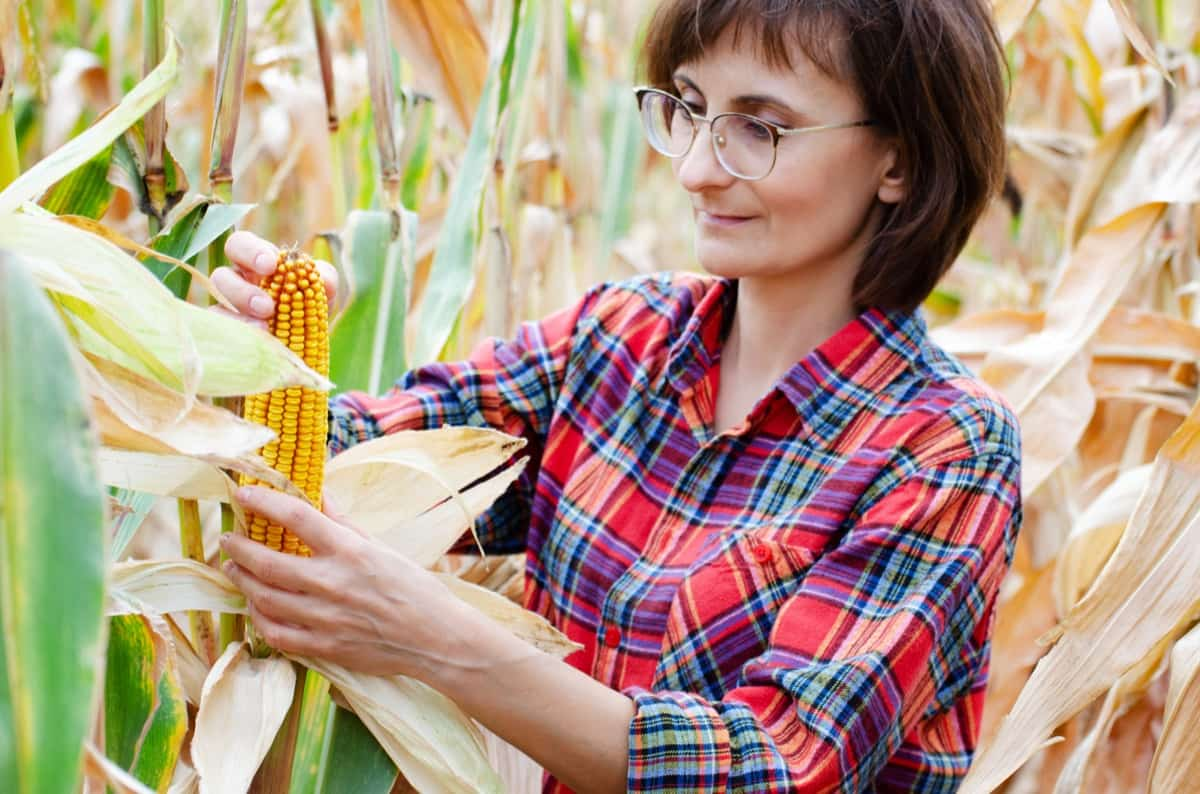Corn farming is a profitable agribusiness venture in the United States. The USA is one of the largest producers of corn in the world, with over 96 million acres of corn cultivated annually. Corn is an essential crop with many applications in the food, beverage, industrial, and fuel sectors.

If you’re a beginner looking to start corn farming in the USA, this production guide will provide you with step-by-step instructions on how to do so. Below we learn how to plant corn step by step, the total process of corn production, and a detailed step-by-step guide on how to produce corn.
How to Start Corn/Maize Farming in the USA
Market Research
Before you begin, research the corn market to determine demand and pricing. Find out what types of corn varieties are grown in your region, who the buyers are, and what they’re looking for in terms of quality and quantity. You can gather this information from government agricultural agencies, agricultural extension offices, local farming associations, and industry publications.
Suitable Location
Choose a location for your corn farm with fertile soil, a warm climate, and good drainage. If possible, locate your farm close to roads, transportation hubs, and markets to minimize transportation costs. You should also consider the availability of labor, access to irrigation water, and potential risks such as floods or pests.
Acquire Land
You can either purchase or lease land for your corn farm, depending on your financial resources and the availability of land in your area. Ideally, the land should be suitable for corn cultivation, have access to irrigation water, and be free from legal disputes or environmental issues.
Prepare the Land
Before planting, you need to prepare the land for cultivation. This involves clearing the land of any weeds, rocks, or debris and tilling the soil to loosen it. You can use a tractor or other suitable equipment for this process. You should also test the soil’s nutrient content and pH level. You can add the necessary fertilizers and soil amendments to improve soil fertility and structure based on the test results.
Corn Varieties
Select the corn variety that best suits your location and market demand. Some common corn varieties grown in the US include dent corn, sweet corn, and popcorn. You can obtain seeds from local seed dealers, companies, or agricultural extension offices. Choose high-quality, disease-free seeds adapted to your soil type, climate, and other environmental conditions.
Planting
Plant the corn seeds according to your chosen variety’s recommended planting density and spacing. The ideal planting time depends on your location and climate, but generally, corn is planted in spring or early summer. You can plant using broadcasting, drilling, or planting in rows. Make sure to apply herbicides and pesticides to control weeds and pests.
In case you missed it: Maize/Corn Production Guide: A Step-By-Step Cultivation Practices

Irrigation
Corn requires sufficient moisture for optimal growth and yield. If there is insufficient rainfall in your area, you must provide irrigation to the crop. Depending on the water availability and your preference, you can use sprinkler systems, drip irrigation, or flood irrigation. Monitor the soil’s moisture level regularly and adjust irrigation to avoid over or under-watering.
Pest and Disease Control
Corn is susceptible to pests and diseases that can reduce yield and quality. Monitor your crop regularly for signs of damage or infestation and apply pesticides or fungicides as necessary. You can also use cultural practices such as crop rotation, intercropping, and planting disease-resistant varieties to minimize pest and disease pressure.
Harvesting
Harvest your corn when the kernels are mature, and the moisture content is around 20-25%. You can tell when the corn is ready for harvest by checking the kernels’ color, size, and moisture content. You can use a combined harvester or other suitable equipment for harvesting. After harvesting, store the corn in a cool, dry place to prevent spoilage.
Marketing
After harvesting, you need to market your corn to potential buyers. You can sell your corn to grain elevators, processors, or other buyers in your area. You should also consider value-adding options such as processing the corn into flour or other products to increase your profit margin. Build relationships with potential buyers and establish a reputation for producing high-quality corn. Stay informed about market trends and prices to ensure you’re selling your corn at the best possible price.
Maintain Records
Maintain detailed records of your corn farming activities, including expenses, yields, inputs, and profits. These records can help you to track your progress, identify areas for improvement, and make informed decisions about your farming operations. You can use a spreadsheet, notebook, or farm management software to keep track of your records.
Learning and Improvement
Corn farming is a dynamic field that requires continuous learning and improvement. Stay updated on the latest research, technologies, and best practices in corn farming by attending workshops, conferences, and training programs. Consult with agricultural experts and other farmers to exchange ideas and experiences. Continuously evaluate and adjust your farming practices to improve efficiency, productivity, and profitability.
In case you missed it: 1 Acre Maize/Corn Cultivation Project Report in India: Production Cost and Profit

Conclusion
Starting a corn farm in the USA requires careful planning, hard work, and a willingness to learn and adapt. Corn farming can be a profitable and rewarding agribusiness venture with the right approach.
- Feed Your Flock for Less: Top 10 Tips to Save on Chicken Feed
- Ultimate Guide to Ossabaw Island Hog: Breeding, Raising, Diet, and Care
- Hatching Answers: The Top 10 Reasons Your Chickens Aren’t Laying Eggs
- Eggs and Economics: Breaking Down the Cost of Raising Backyard Chickens
- Defend Your Greens: Proven Methods to Keep Iguanas Out of Your Garden
- Ultimate Guide to Cinnamon Queen Chicken: A Comprehensive Guide for Beginners
- Ultimate Guide to California Tan Chicken: Breeding, Raising, Diet, Egg-Production and Care
- Ultimate Guide to Marsh Daisy Chicken: Breeding, Raising, Diet, and Care
- 10 Types of Chicken Farming Businesses You Can Start for Profits